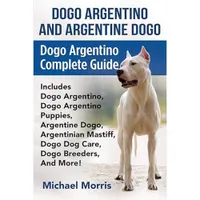Dogo Argentinos are loyal and intelligent but also incredibly controversial
We take a closer look at the Argentinian Mastiff, which is banned in some countries yet still loved in many others
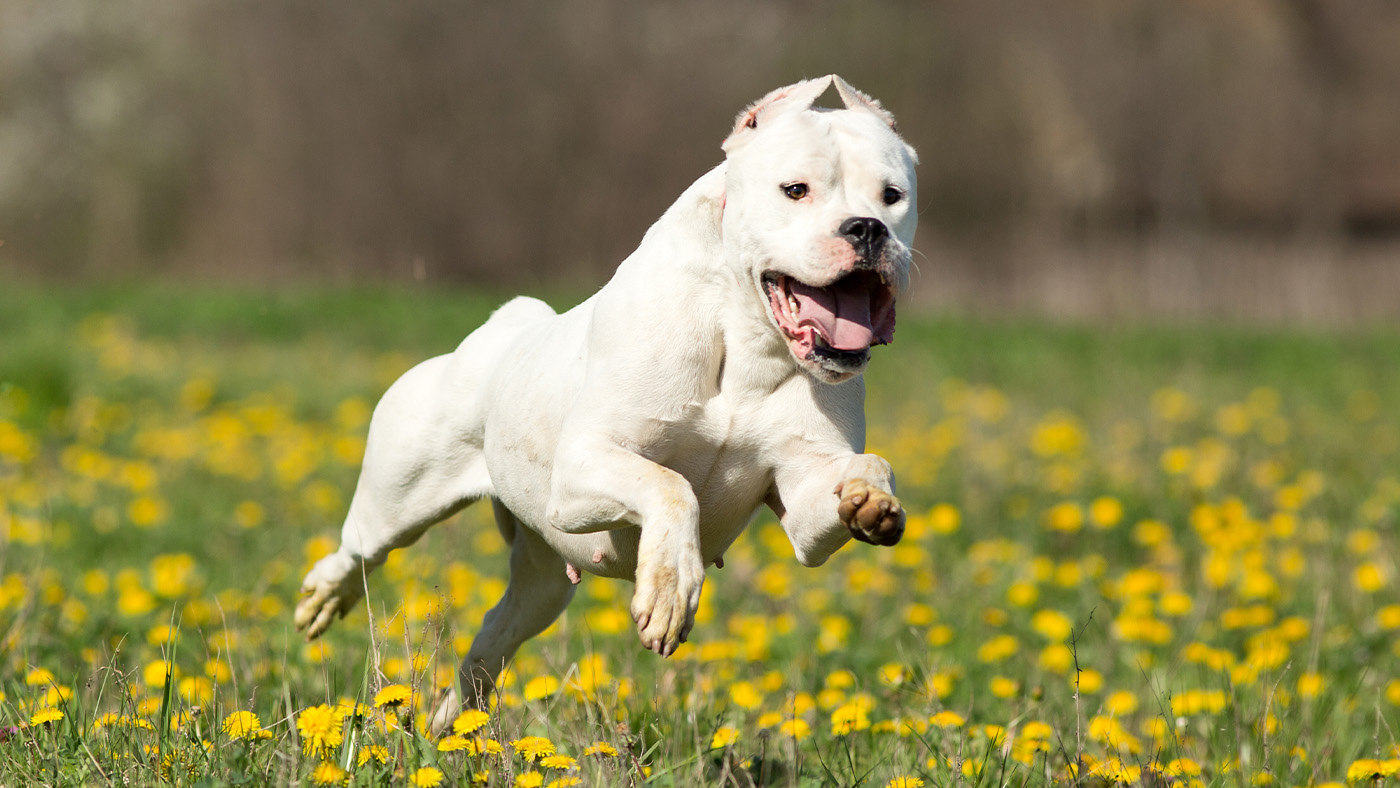
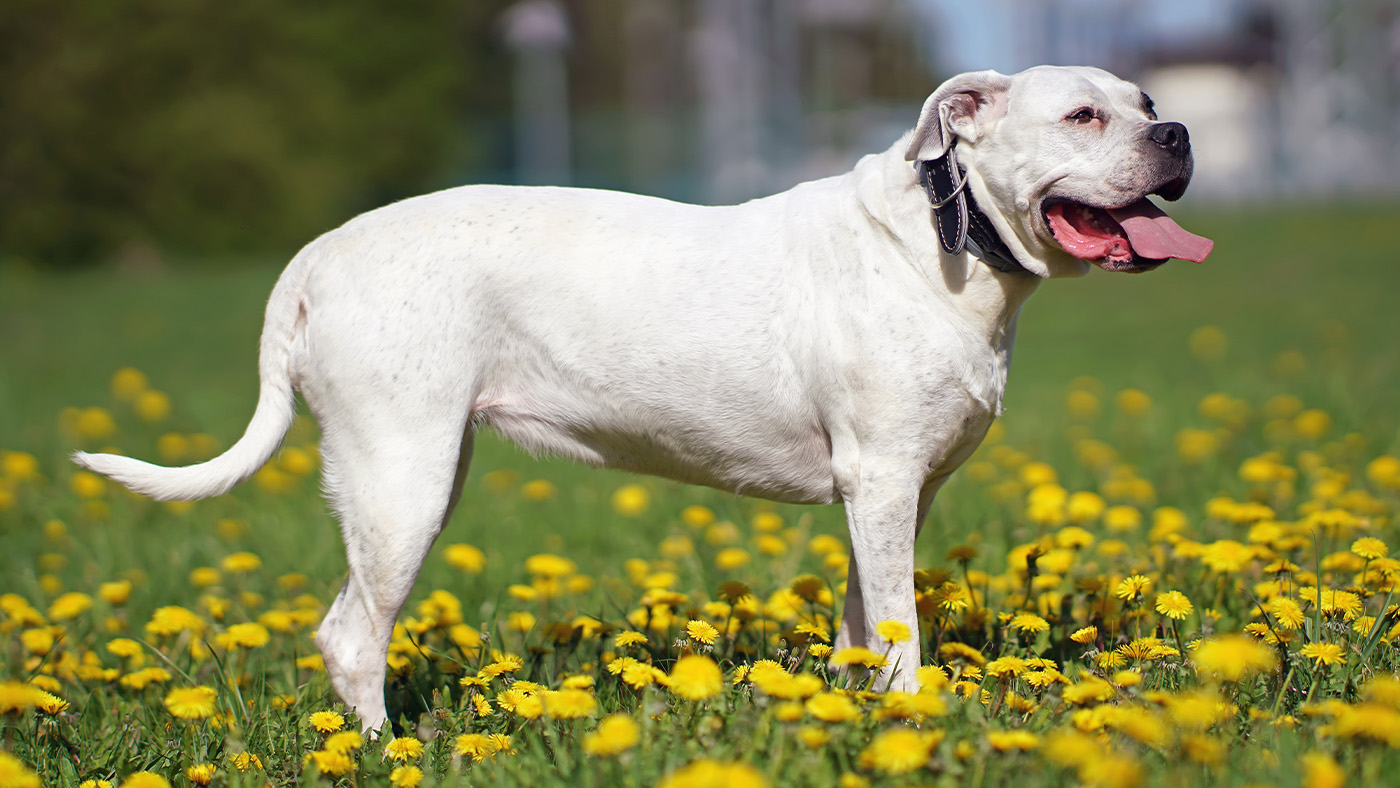
Life expectancy: 10 to 15 years years
Size: 24-27-inches (male); 24-25.5-inches (female)
Coat: Short and smooth
Temperament: Protective, affectionate, friendly, loyal
Exercise needs: About 90 minutes daily
Origin/native country: Argentina
Dogo Argentinos are a descendant of the now extinct fighting dog of Corboda. They were bred in 1928 by Antonio Nores Martinez to be big game hunting dogs, which has given them the strength to take down animals, such as wild hogs many, times their size.
Over the years, these mastiff-type dogs have become prized as highly effective guard dogs and they’ve also gained a reputation for being aggressive. But, as you’ll see, they’re not inherently dangerous – it’s just that some people may not know how best to handle them.
In this guide, then, we take a deeper look into what makes Dogo Argentinos – also known as Argentinian Mastiffs – tick and examine whether they would make a good pet. We do so with the assistance of expert vet Dr Rebecca MacMillan who also explains some of the health problems associated with this breed.
Is the Dogo Argentino aggressive?
It’s a good idea to address the one question that so many potential owners of a Dogo Argentino ask: is this a dangerous breed? Well, given that it's banned in countries such as Australia, New Zealand, Hong Kong and the United Kingdom, there is a strong argument to suggest that, yes, the Dogo Argentino is aggressive.
But it’s not as clear cut as that. In the UK, for instance, where the Dangerous Dogs Act 1991 outlaws Dog Argentinos along with the pit bull terrier, Fila Brasileiro, Japanese Rosa and American XL Bully, the Royal Society for the Prevention of Cruelty to Animals (RSPCA) believes a rethink is necessary.
It says the Dangerous Dogs Act “doesn’t work” and reckons “aggressive behavior can be influenced by factors such as how they’re bred, reared and experiences throughout their lives”. And yet there is no doubt that the bans have left something of a cloud hanging over the breed and if you’re able and willing to take one on, it may be a good idea to think long and hard before taking the plunge.
One thing to bear in mind is their strong bite, estimated to be between 250–300 PSI – necessary for them to carry out their prime duty of holding on to prey.
Get the best advice, tips and top tech for your beloved Pets
“These are large, powerful dogs that are capable of causing real damage,” Dr MacMillan says. “Owners must care for them properly.”
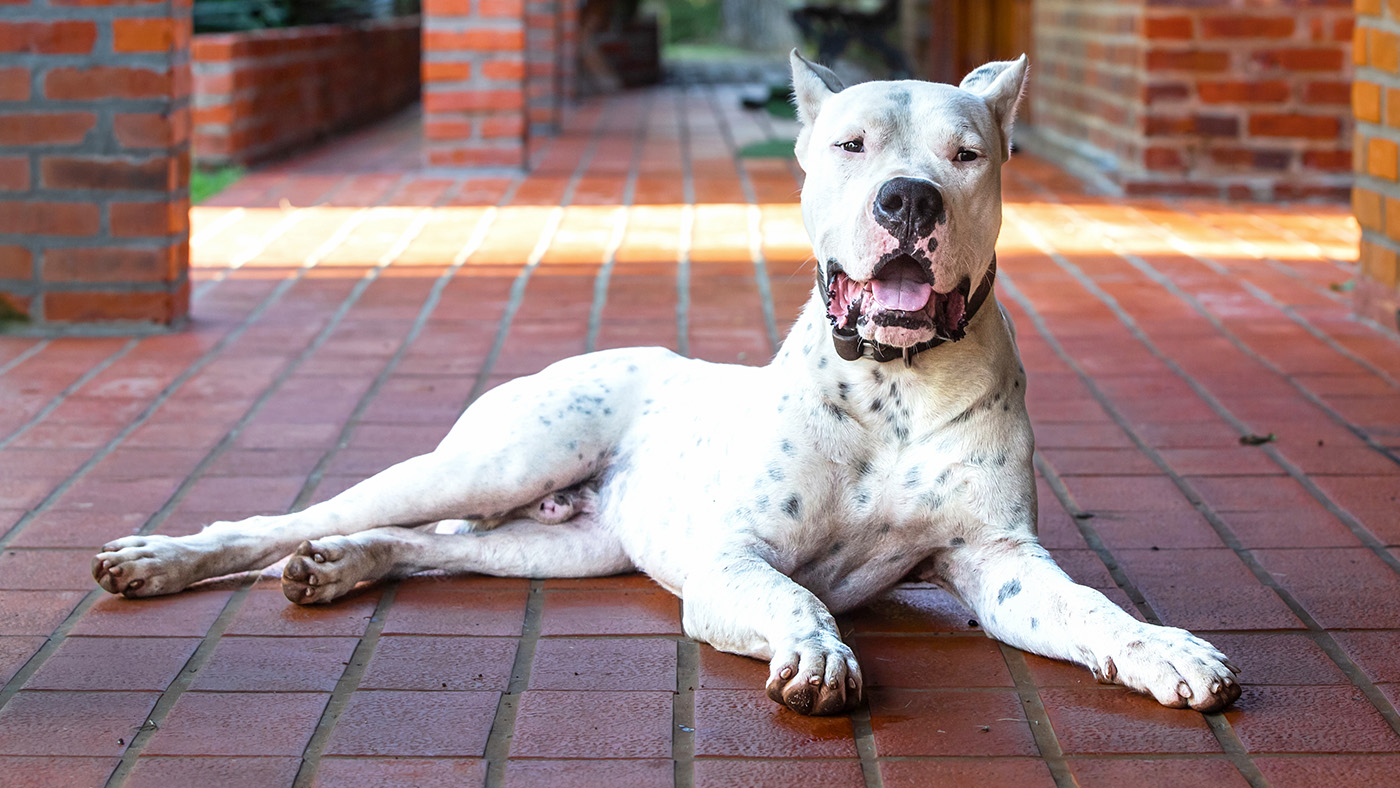
Does a Dogo Argentino need a lot of exercise?
Ensuring a Dogo Argentino is sufficiently exercised is important and it’s one of the basics of proper care for this breed. Without enough daily exercise, Dogo Argentinos can become bored and destructive so you need to devote a decent amount of time physically and mentally stimulating them.
“The Dogo Argentino needs around 90 minutes of exercise each day to keep them happy. This is a high-energy dog and behavioural problems are likely if they are under exercised,” Dr MacMillan says.
To that end, you will need to take them on long walks and runs, doing your best to tire them out. If you’re in a public place, you should always keep this breed on a leash, only allowing them to run freely in a safe, secure, private area such as a large yard or dedicated dog space.
When off leash, you can engage in some fun games, such as fetch. This breed also likes to swim, learn new tricks and play hide-and-seek.
Are Dogo Argentinos easy to train?
Dogo Argentinos need to be trained and they must be trained well.
“The breed is known for aggression and could show these tendencies if they haven’t received appropriate socialization and training,” Dr MacMillan says.
As with other guard dog breeds, however, it’s not necessarily an easy task.
”This is not a beginner’s dog,” Dr MacMillan continues. “Dogo Argentinos are large, muscular dogs with a headstrong nature. It is essential that these dogs are trained with a consistent and positive approach, otherwise problems could develop.”
It’s important to assert authority from a very young age to ensure the dog respects and listens to your dog cues. The breed also needs to be introduced to humans and other animals from the get-go, with the trick being to instil confidence and ensure all interactions are positive to ensure they remain as friendly as possible. If you enlist help by taking them to training classes, you can head off many potential problems.
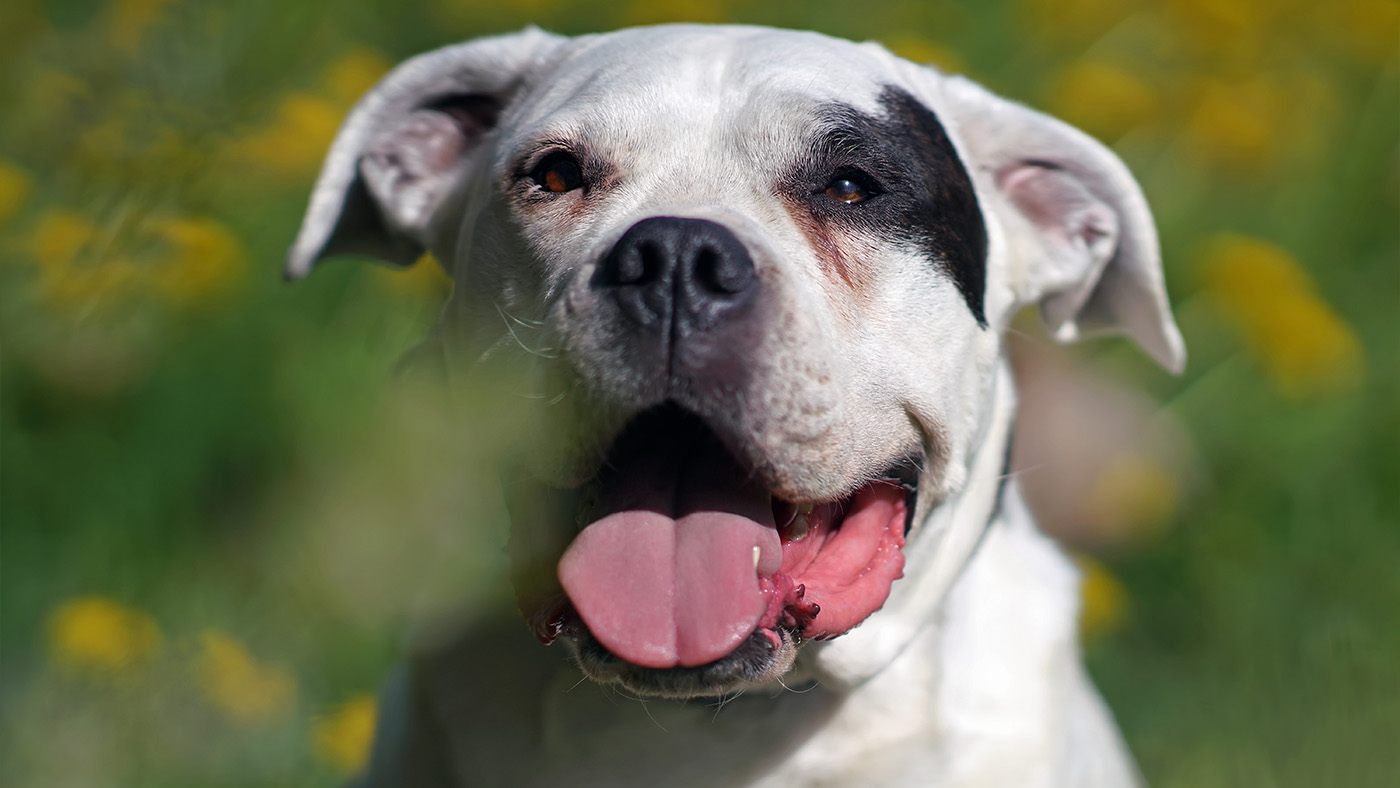
Do Dogo Argentinos make good family pets?
Dogo Argentinos have many positive traits.
“They are known for being loyal, protective and intelligent,” Dr MacMillan says. They can get on really well with people and children and you will reduce any issues if you teach them to play gently. Even so, it’s a big decision to make.
“I personally wouldn’t recommend them as a family pet, especially as they are a banned breed in some countries because of questions about their temperament,” says Dr MacMillan.
“If you choose to introduce them to your family, then it is not without risk and children must be supervised at all times with this dog.”
Wisdom Panel Breed Discovery DNA Kit | Amazon
Not sure exactly what breed your dog is? This kit screens for 365+ breeds – because knowing every detail about your dog helps you understand how best to care for them.
Do Dogo Argentinos need a lot of grooming?
Grooming is a great way to bond with any breed but you don’t need to spend too much time keeping a Dogo Argentino looking great.
“The breed has a short and easy to care for coat so weekly grooming should be enough to remove loose hairs,” Dr MacMillan says.
“They do shed, but not as much as some other breeds but they are not considered to be a hypoallergenic breed.”
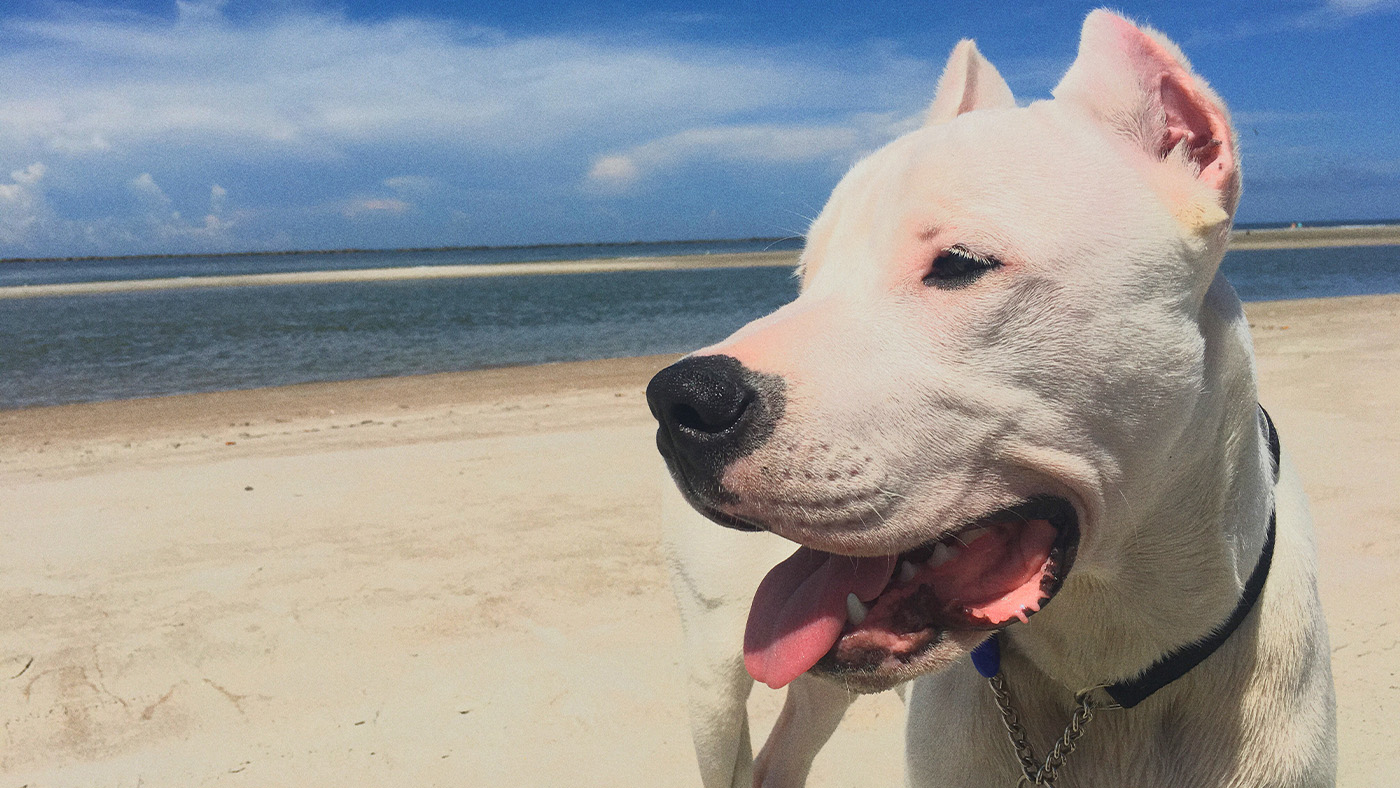
Common Dogo Argentino health problems
Dogo Argentinos are generally healthy but, like many large breed dogs, the breed is prone to hip dysplasia.
“This inherited joint condition can lead to pain, mobility issues, and the early onset of arthritis,” Dr MacMillan says.
Deafness also commonly affects this breed.
“Congenital deafness is linked to the genes that control a dog’s pigmentation and in this breed, the whiter the dog is, the more likely it is to be deaf, so you should choose a puppy with patches of coloration if you want to reduce the risk.”
The Dogo Argentino is also at risk from gastric dilatation volvulus.
“This is due to its large size and deep chest,” Dr MacMillan adds. “The stomach bloats and then twists on itself, which is fatal without urgent veterinary treatment.”
Should I get a Dogo Argentino?
Whether or not you get a Dogo Argentino depends so much on your circumstance, desire and experience. If, for example, you’re looking for a guard dog, then a Dogo Argentino will inevitably be on your list if you’re allowed to own one.
In this regard, it’s worth learning more about the world’s elite guard dog but if you’re simply looking for a pet and like the strong look of this breed, then there are other things to bear in mind.
Do you have sufficient space? This breed is not suitable for an apartment. Do you have young children? Many experts would suggest looking for a different breed – here’s our guide to the best family dogs. Do you think you’re up to the task of training and exercising a Dogo Argentino? If not, you’re likely to run into problems.
With a lot of work, however, you will find this breed is gentle and friendly, rubbing along well with older children. Dogo Argentinos are also very loving and fiercely loyal. You just have to be confident and have a good idea of what you’re doing.
Dogo Argentino Complete Guide | Amazon
This book covers everything you need to know about the Dogo Argentino, from finding a puppy, and how to care for one throughout adolescence and into adulthood.
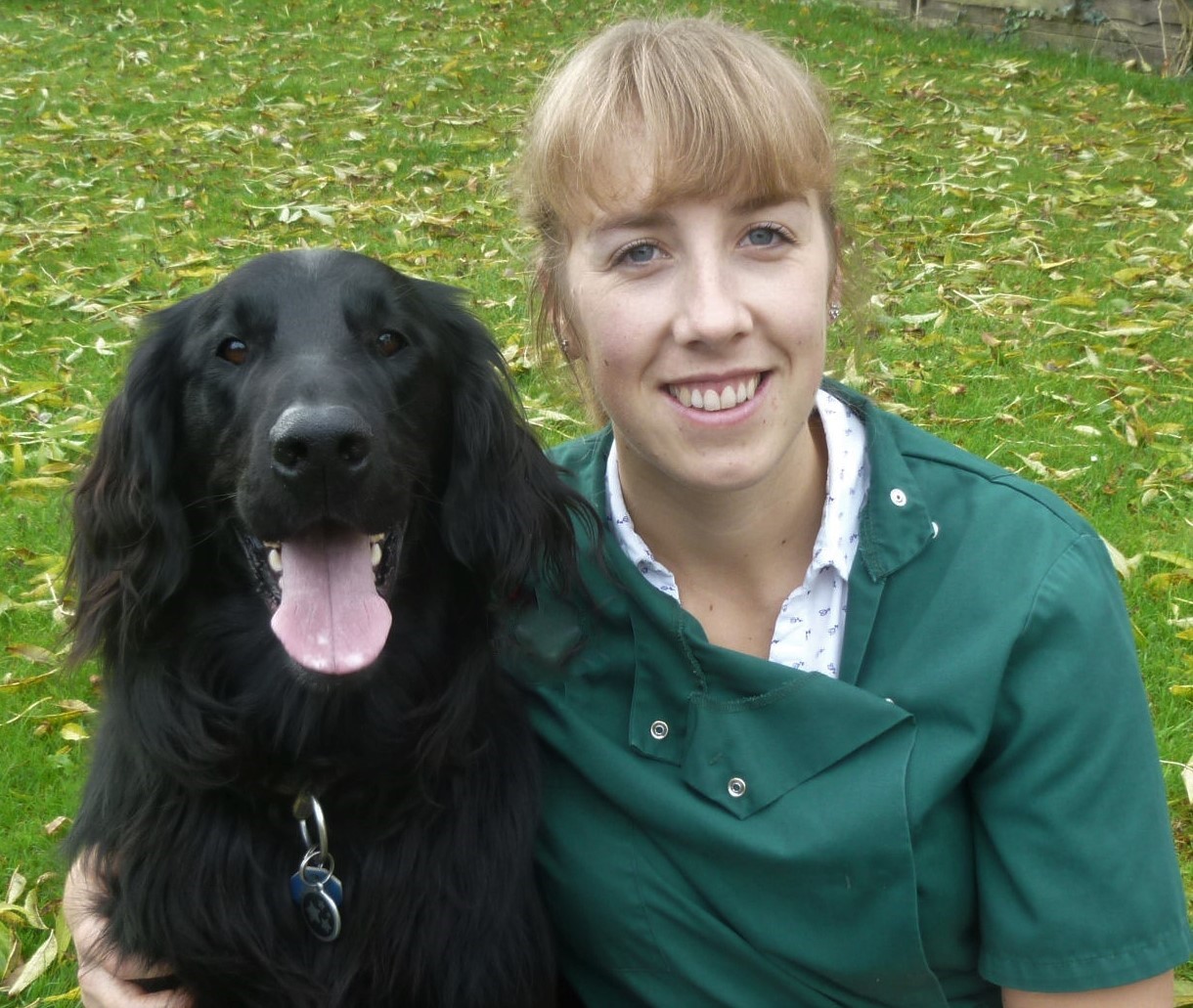
Rebecca is a veterinary surgeon who graduated in 2009 from the Royal Veterinary College in London. She has a wealth of experience in first opinion small animal practice, having done a mixture of day-to-day routine work, on-call emergency duties and managerial roles over the years. Rebecca enjoys medicine in particular and she is proud to have recently achieved a BSAVA postgraduate certificate in small animal medicine (with commendation).
She writes on various feline and canine topics, including behavior, nutrition, and health. Outside of work and writing she enjoys walking her own dog, spending time with her young family and baking!
Edited by Georgia Guerin.
This feature was last updated in May 2025.

David Crookes has been a journalist for almost 30 years and he has written for a host of magazines, newspapers, websites and books including the World of Animals Annual, BBC Earth, Live Science, The Independent and Tom’s Guide.
Born in England, he lives with two cats but he’s also keenly interested in the differences between the huge number of dog breeds – in fact, you can read many of his breed guides that he’s written in collaboration with vets here on PetsRadar.
With a lifelong passion for technology, too, he’s always on the lookout for useful devices that will allow people to keep their pets happier and healthier, and provide them more time to spend together.
David has a degree from Durham University, as well as postgraduate diploma in journalism from the University of Central Lancashire.

